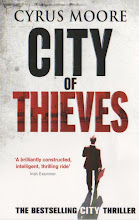In the last ten years, the price of gold has quadrupled from around $300 per troy ounce to around $1,400. Western investors now see gold in the way that middle class Indian families have always seen it – as a reliable store of wealth.
The rise of the gold price reflects the decline of the US dollar as the world’s reserve currency. After the World War II when the USA was the world’s largest net exporter, the US dollar strengthened on the back a strong US economy that exported to the world. Since the US was not only the strongest economy, but also the largest, its currency became the world reserve currency. That meant trade was conducted in dollar terms and commodities like oil were priced in dollars. The USA’s manufacturing base gradually went into decline as factories moved to cheaper locations like China, but the dollar remained the world reserve currency. That meant that the US could spend above its means and simply print money to make up the balance. But without the underlying economic strength to back up its currency, the US risks losing reserve currency status.
This week, Robert Zoellick, President of the World Bank, suggested that gold may once again be viewed as an alternative to currencies. The world once had a gold standard, but abandoned it in 1945, replacing it with the Bretton Woods system of fixed but adjustable exchange rates. That system broke down in 1971. Since then most industrialised nations have let their currencies float freely. Over the last decade, the big exception to that rule has been China. Despite being the world’s second largest economy, its largest net exporter and its largest energy user, China still effectively fixes its exchange rate.
Since 1971, floating exchange rates provided an excellent release valve for trade imbalances; when a country exported more than it imported, investor confidence in its currency would push up its exchange rate, making its exports more expensive, thereby reducing its trade imbalance. But that system has come unstuck. The world’s largest economy, the USA, is printing money – it has just embarked on a second round of quantitative easing to the tune of $600bn. Simultaneously the world’s second largest economy, China, is artificially keeping its exchange rate down. As trade imbalances inevitably worsen in these conditions, investors will gradually move away from the US dollar towards either a basket of reserve currencies (e.g. the dollar, renminbi, yen and Euro) or towards a gold standard.
In theory, a gold standard requires some element of your currency to be backed up by gold bullion. The Chinese have been building up huge reserves of gold bullion with their foreign exchange reserves. The US too has large supplies, but nowhere near enough to support its currency. The UK sold much of its gold reserves for a quarter of today’s price under Gordon Brown’s chancellorship between 1999 and 2002.
Under a gold standard China would become stronger and America weaker. Net importers like France and the UK would also become weaker. The price of your currency is a symbol of power. The world will fight over gold. That fight will get dirty.
And that dirt is the setting for my second novel.
Wednesday, 10 November 2010
Subscribe to:
Post Comments (Atom)






No comments:
Post a Comment